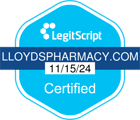Explore more

A guide to fragrances for him
Searching for a signature scent? Our beginner's guide to men's fragrances, aftershaves and colognes will help you choose the right scent for you.
Continue reading
Baby skincare
Help care for your baby's delicate skin with the best skincare products. Whether your little one has dry or sensitive skin we can help with baby skincare.
Continue reading
What is ringworm?
Ringworm is a common fungal skin infection with an itchy rash, often shaped like a ring. Find out the symptoms of ringworm, how it's caught, and how you can treat it.
Continue reading
How to prevent scarring
Find out about the different types of scars and why scar tissue forms. We’ll discuss how to get rid of scars and how to prevent new ones from forming.
Continue reading
Swimming with eczema
If you or your child has eczema, you may be wondering what effect swimming has on skin. Read our guide and learn how to reduce your chances of a flare up.
Continue reading
What causes dry skin?
Dry skin on your body is a common condition. Learn the factors that may cause your skin to become dry, how to treat dry skin and how to prevent it.
Continue reading
